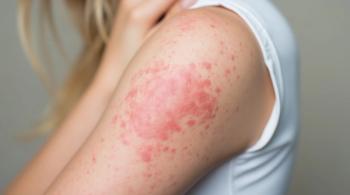
Emicizumab Has Strong Safety, Efficacy Record in Real-World Usage
The most common treatment-related adverse events were injection site reactions, the study found.
Newly compiled data suggest the
Emicizumab is a subcutaneously administered bispecific antibody that works by mimicking the cofactor function of factor VIII (FVIII), which is deficient in patients with hemophilia A, explained the study authors.
“It shares no sequence homology with FVIII, meaning it can restore hemostasis regardless of the presence of FVIII inhibitors,” they wrote. “Additionally, emicizumab has a half-life of 26.8 days, which permits sustained activity levels with less frequent and flexible dosing.”
The therapy was first approved in the United States in 2017,2 and has been used by more than 20,000 patients. Its rapid adoption by physicians and patients has produced a wealth of data about its safety and efficacy. In the new review, the authors sought to create a single resource combining insights from the drug’s clinical trials and real-world usage reports.
The authors identified 136 publications that met their inclusion criteria. Most of the studies were real-world studies (109), 27 were clinical trials, and 19 were case reports.
The review used treated annualized bleed rate (ABR) as one of the main criteria of efficacy, and found that it remained low among emicizumab users. Studies included in the review had mean treated ABRs ranging from 0.7 to 1.3 in clinical trials and 0.2 to 1.4 in real-world studies. The median treated ABRs were 0.9 for clinical trials and 0.4 for real-world studies. The median percentage of people with no treated bleeds was 66.7%, the authors found.
“Collectively, results demonstrate that emicizumab is a well-tolerated and effective prophylaxis option that reduces bleeding events while alleviating the burden of intravenous infusions associated with FVIII replacement therapies,” Young and colleagues said.
In terms of safety, the authors found wide variance in the number of people who experienced at least 1 adverse event (AE). In clinical trials, the percentage ranged from 70.4% to 100%; in real-world studies, the range was 0% to 70.6%. The authors said there could be several reasons for the wide range, including different criteria for safety reporting, and the greater reliance on self-reporting in real-world studies. However, the investigators said the most common treatment-related AE was injection site reactions.
Overall, the 37 studies that reported on safety reported a total of 11 thrombotic events and 4 thrombotic microangiopathies.
Turning to quality of life, the authors said the clinical trials of emicizumab support the premise that the therapy improves patients’ quality of life, although they said common assessment tools for quality of life are not typically used in real-world studies. However, they said the available qualitative evidence aligns with the data from the clinical trials. One such study,
“For 2 [of the patients], while emicizumab had made a tangible difference in that they experienced fewer bleeds and less pain, the potential improvements reported by others (increased mobility, freedom to undertake sports and exercise) were unrealized because they could not access the physiotherapy and social care support that would allow them to achieve this,” that study noted.
In their review, the present study’s authors said the studies they analyzed had important differences, which limited their ability to perform comprehensive statistical analyses. They also noted that their review focused on people with congenital hemophilia A, and thus does not necessarily reflect the experiences of people with other indications. Overall, however, they said their findings show that emicizumab is producing results in line with expectations.
“[T]hese data support [emicizumab’s] acceptable tolerability, effectiveness, and positive impact on QoL, regardless of age, disease severity, or FVIII inhibitor status,” they concluded.
References
1. Young G, Pipe SW, Kenet G, et al. Emicizumab is well tolerated and effective in people with congenital hemophilia A regardless of age, severity of disease, or inhibitor status: a scoping review. Res Pract Thromb Haemost. 2024;8(4):102415. doi:10.1016/j.rpth.2024.102415
2. FDA approves emicizumab-kxwh for prevention and reduction of bleeding in patients with hemophilia A with factor VIII inhibitors. News release. FDA. November 16, 2017. Accessed June 13, 2024. https://www.fda.gov/drugs/resources-information-approved-drugs/fda-approves-emicizumab-kxwh-prevention-and-reduction-bleeding-patients-hemophilia-factor-viii
3. Fletcher S, Jenner K, Holland M, Khair K. The lived experience of a novel disruptive therapy in a group of men and boys with haemophilia A with inhibitors: Emi & Me. Health Expect. 2022;25(1):443-454. doi:10.1111/hex.13404
Newsletter
Stay ahead of policy, cost, and value—subscribe to AJMC for expert insights at the intersection of clinical care and health economics.















































